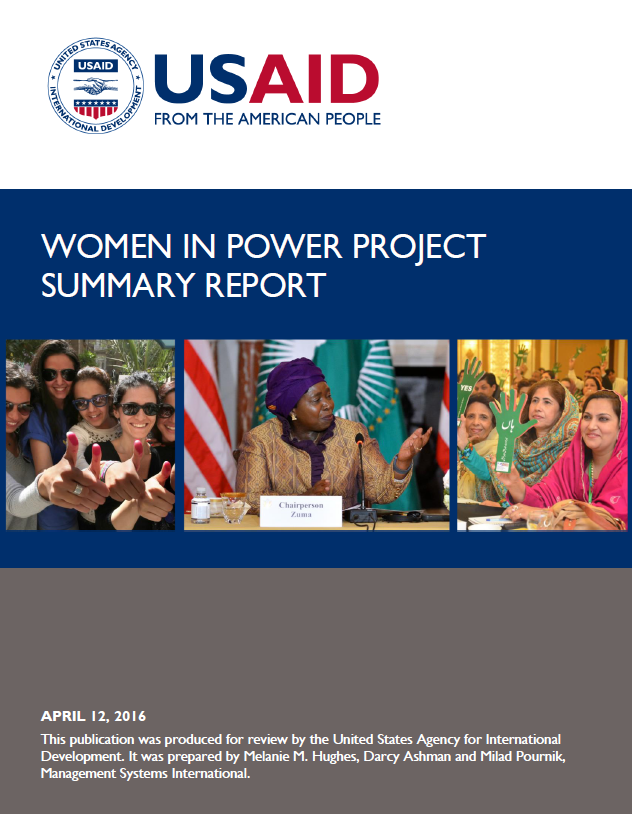Speeches Shim
Countries cannot fully realize democratic governance and sustainable development without women’s equal participation in all facets of life, including in politics. The Center of Excellence on Democracy, Human Rights and Governance (DRG Center) of the United States Agency for International Development (USAID) launched the Women in Power (WiP) project to better understand its women’s political empowerment programming; to improve upon existing measures of women’s political leadership; and to bring donors, practitioners and academics together for mutual learning to advance work in this field.
The WiP project generated substantial insights and best-practice strategies to increase the supply of women with the skills, experience and will to run for and serve in public office; strengthen the demand for women politicians and leaders; or both. Supply-side strategies provide insights on how USAID and its partners can more effectively support women leaders and candidates, close campaign finance gaps and enhance elected women’s leadership and policymaking skills. Demand-side strategies highlight practices that support the inclusion of women participants in political transitions and foster women’s access to institutions that include political parties, electoral management bodies and legislatures. Dual supply-and-demand strategies propose ways that USAID and its partners can address deep-rooted sociocultural barriers to women’s political empowerment by mainstreaming gender in civic and voter education, using the media as a force for change and combating violence against women in politics.
The WiP project also piloted a new tool for measuring women’s political empowerment: the Diamond Leadership Model (DLM). It adds to existing measures of women’s political leadership, most of which focus only on the percentage of women in a national legislature or executive cabinet, but do not capture variation in women’s representation across government sectors. The DLM closes this data gap by measuring women’s political leadership horizontally (legislative, executive, judicial and security sectors) and vertically (leadership positions at high, middle and low levels) to create a country’s Women’s Power Score (WPS). The project piloted the new model in 40 developing countries where USAID works. The DLM pilot study found that women’s political leadership is often highly uneven across government sectors; representation in one sector does not guarantee women’s leadership in other parts of the government. It also demonstrated that while much of this data was relatively easy to access, security sector data was not often publicly available and was the most challenging to collect.
The WiP project led to comprehensive and cutting-edge learning related to women’s political empowerment and identified multiple areas for improvement. A key starting point for USAID and its partners is to develop a clearer definition of women’s political empowerment that goes beyond the physical representation of women in government and includes their ability to influence public policy development and implementation. The project proposes a new working definition of women’s political empowerment, which includes: the equal participation, representation and leadership of women within government institutions, political parties and civically engaged organizations; women’s free exercise of the authority inherent in those positions; and the regular creation, implementation and enforcement of laws and policies that address women’s rights, positions and priorities.
Clarifying the meaning of women’s political empowerment is a necessary first step to advancing a more holistic approach to programming. The WiP project also highlighted a clear need for development practitioners to adopt longer-term and context-specific programming focused on increasing women’s political empowerment during all phases of the electoral and governance cycle. This includes looking at other government sectors beyond the legislature and paying closer attention to subnational as well as national levels of government. It also requires allocating dedicated resources to support women’s political empowerment programming and developing better indicators and reporting systems to measure their impact. Finally, the project identifies areas where more robust and intentional collaboration among donors, implementing partners and academics could foster better data collection, improve shared learning, contribute to more successful programming and ultimately lead to more women empowered to serve in public office.


Comment
Make a general inquiry or suggest an improvement.